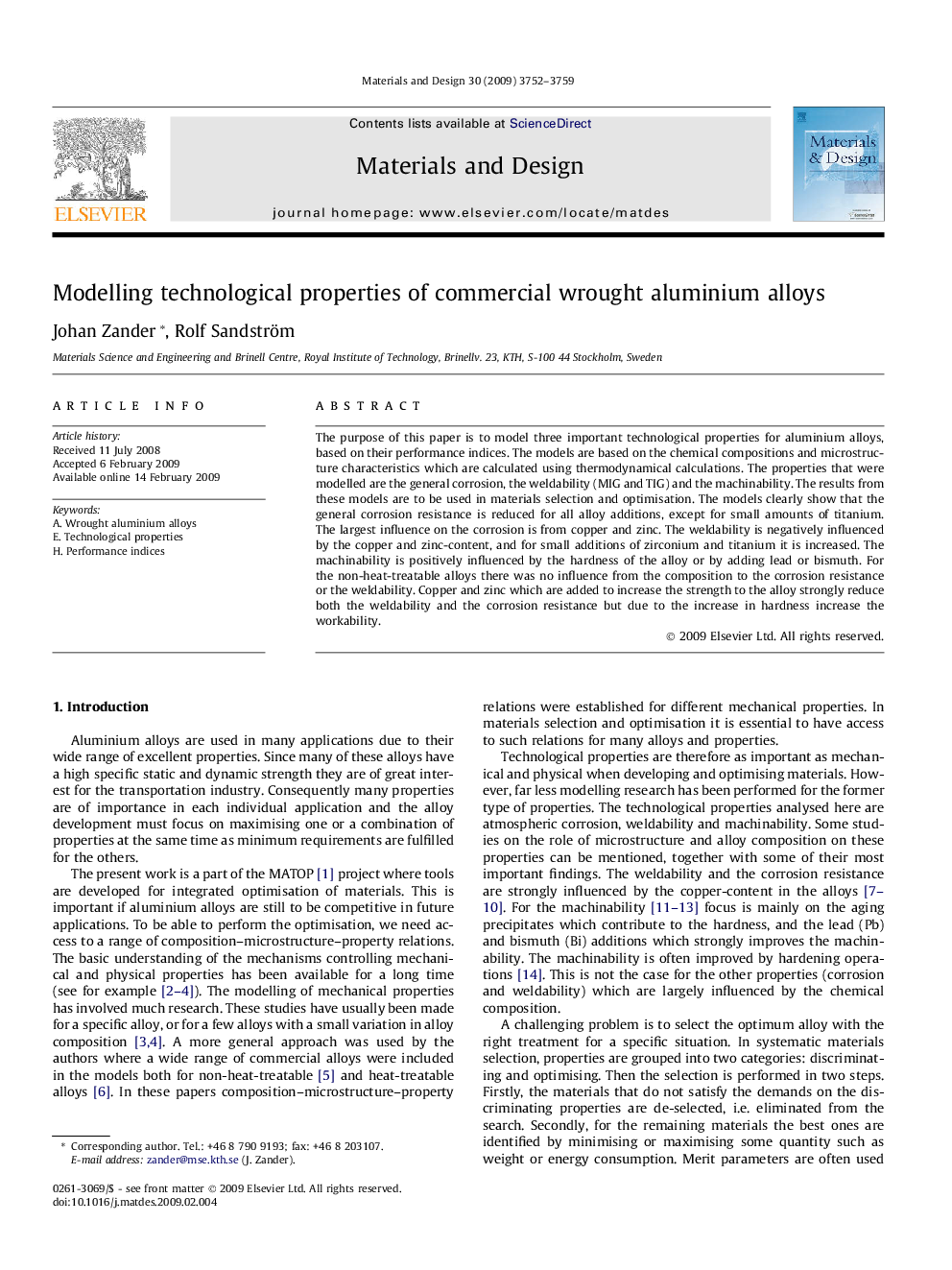| Article ID | Journal | Published Year | Pages | File Type |
|---|---|---|---|---|
| 832670 | Materials & Design (1980-2015) | 2009 | 8 Pages |
The purpose of this paper is to model three important technological properties for aluminium alloys, based on their performance indices. The models are based on the chemical compositions and microstructure characteristics which are calculated using thermodynamical calculations. The properties that were modelled are the general corrosion, the weldability (MIG and TIG) and the machinability. The results from these models are to be used in materials selection and optimisation. The models clearly show that the general corrosion resistance is reduced for all alloy additions, except for small amounts of titanium. The largest influence on the corrosion is from copper and zinc. The weldability is negatively influenced by the copper and zinc-content, and for small additions of zirconium and titanium it is increased. The machinability is positively influenced by the hardness of the alloy or by adding lead or bismuth. For the non-heat-treatable alloys there was no influence from the composition to the corrosion resistance or the weldability. Copper and zinc which are added to increase the strength to the alloy strongly reduce both the weldability and the corrosion resistance but due to the increase in hardness increase the workability.
